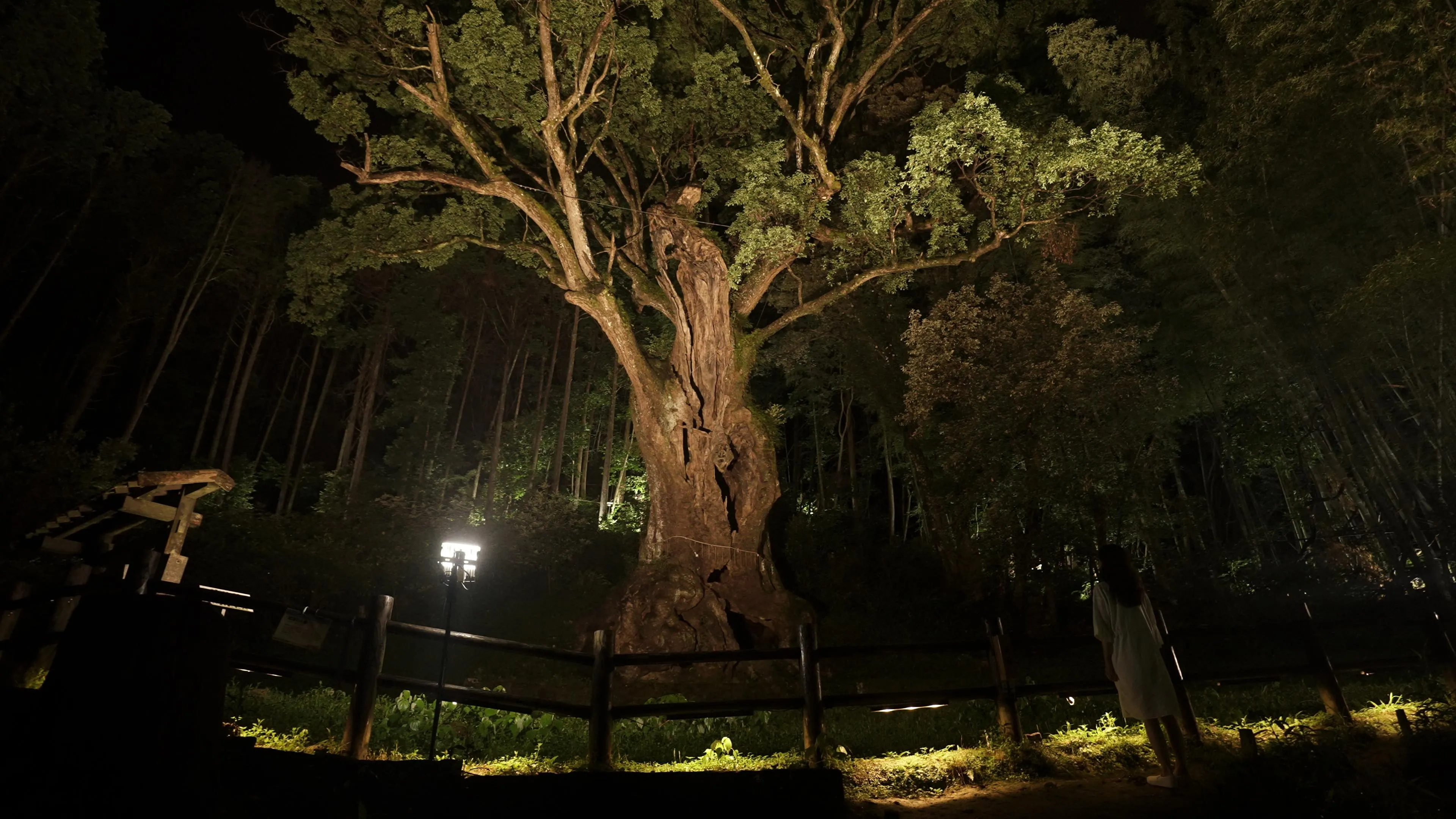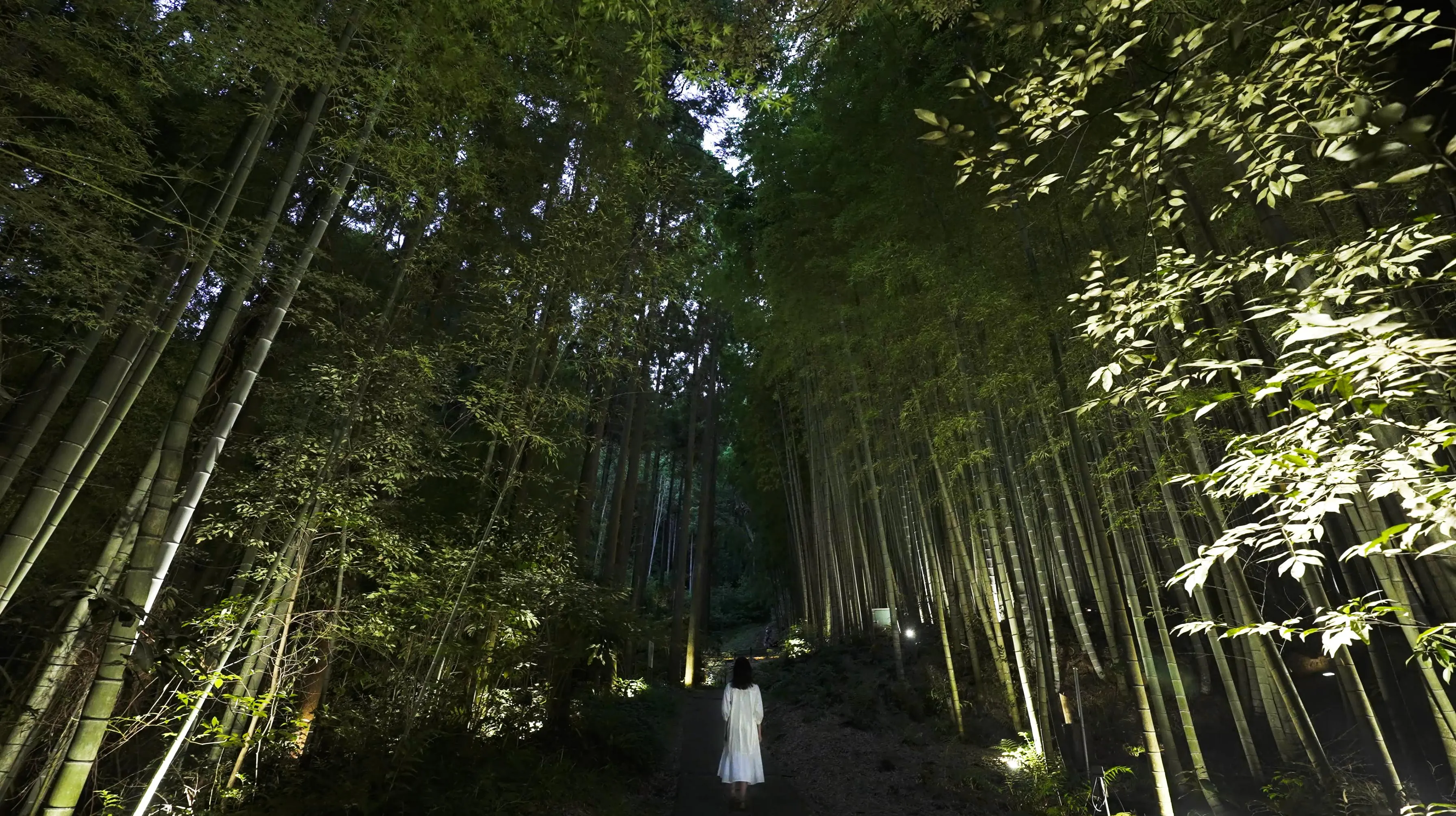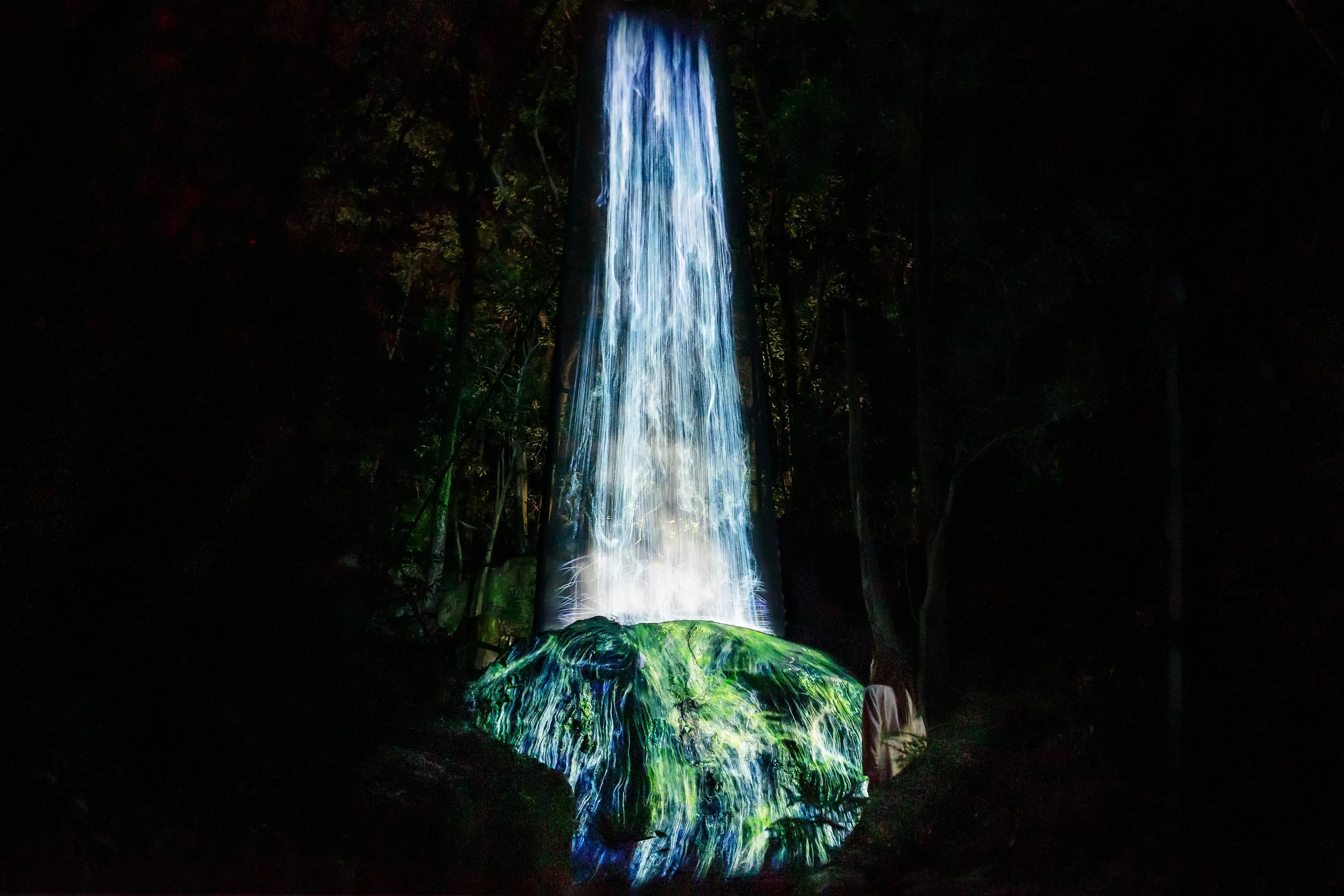The Sacred Tree
teamLab, 2021, Digitized Nature, Sound: Hideaki Takahashi


The Sacred Tree
teamLab, 2021, Digitized Nature, Sound: Hideaki Takahashi
Over 3,000 years old, this camphor tree is the 7th largest tree in Japan. The roots of the tree are wrapped in rough bark, with their central section split open near the surface of the ground. The interior is a hollow space about 22 square meters in size, with a stone shrine in the back. This is the sacred tree of Takeo Shrine, which was built in the Nara Period (735 CE).
Depending on your location and the pace at which you walk through the shrine from the torii gate, to the forest, to the bamboo thicket, to the sacred tree, the musical experience changes.
If you look at the satellite photo on Google Maps, you will see the sacred tree is located in the forests of Mifuneyama that lead to the garden. When the garden was built towards the end of the Edo period (1845 CE), efforts were made to find a path connecting the garden to the sacred tree based on the theory that there was a hidden path in the forest. A footpath made from stones was finally uncovered, where you can find The Floating Tree. Currently, only the section of path between the garden and the sacred tree containing that artwork is being maintained.
Depending on your location and the pace at which you walk through the shrine from the torii gate, to the forest, to the bamboo thicket, to the sacred tree, the musical experience changes.
If you look at the satellite photo on Google Maps, you will see the sacred tree is located in the forests of Mifuneyama that lead to the garden. When the garden was built towards the end of the Edo period (1845 CE), efforts were made to find a path connecting the garden to the sacred tree based on the theory that there was a hidden path in the forest. A footpath made from stones was finally uncovered, where you can find The Floating Tree. Currently, only the section of path between the garden and the sacred tree containing that artwork is being maintained.



